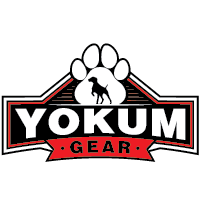Potty training is an essential aspect of raising a well-mannered and well-adjusted dog. A systematic and patient approach can make the training process smooth for both you and your furry friend. Here are some essential tips to help make potty training your dog an effective and stress-free experience.
Start Early
The earlier you begin potty training, the easier it will be for your dog to learn. Puppies as young as 12 weeks old can start basic training. However, even older dogs can be trained with consistent effort and patience.
Establish a Routine
Establishing a regular schedule is crucial in potty training. Take your dog out at the same times every day, such as first thing in the morning, after meals, and before bedtime. Consistency helps your dog understand when and where they are expected to go.
Choose a Designated Spot
Select a specific area in your yard or a particular spot during walks where you want your dog to do their business. Take them to this spot every time, and they will begin to associate it with potty time.
Use Commands
Teach your dog a specific command for potty time, like go potty or do your business. Use this command consistently each time you take them to their designated spot. Over time, they will associate the command with the action.
Supervise and Confinement
During the early days of potty training, close supervision is necessary to catch your dog when they show signs of needing to go. If you can't supervise your dog, confine them to a crate or a small, dog-proofed area. Dogs generally avoid soiling their sleeping areas, which encourages them to hold it until they are taken outside.
Positive Reinforcement
Reward your dog immediately after they successfully go to the bathroom in the right place. Use treats, praise, and affection to reinforce the behavior. Positive reinforcement encourages them to repeat the desired action.
Avoid Punishment
Never punish your dog for accidents. Yelling or physically disciplining them can create fear and confusion, hindering the training process. Instead, focus on reinforcing positive behavior and cleaning up accidents without fuss.
Keep a Feeding Schedule
Keeping your dog on a regular feeding schedule can help manage their bathroom times. Avoid free-feeding; instead, serve meals at consistent times. This predictability makes it easier to anticipate when they will need to go out.
Monitor Water Intake
Keep an eye on your dog's water intake, but do not limit it unnecessarily, as water is vital for their health. Note that dogs are likely to need to go potty after drinking water, so take them out shortly after they have had a drink.
Maintain Patience and Persistence
Potty training requires patience and persistence. All dogs learn at different rates, so be prepared for setbacks. Consistent training and a positive attitude will yield results over time.
Clean Accidents Thoroughly
If your dog has an accident indoors, clean the area thoroughly to remove any lingering smells. Use an enzymatic cleaner designed for pet accidents to eliminate odors, preventing your dog from being drawn back to the same spot.
Conclusion
Effective potty training is fundamental to fostering a positive relationship with your dog. By starting early, being consistent, using positive reinforcement, and remaining patient, you can help your dog understand where and when to go potty. Remember that every dog is unique, and a tailored approach might be necessary for the best results. Happy training!

